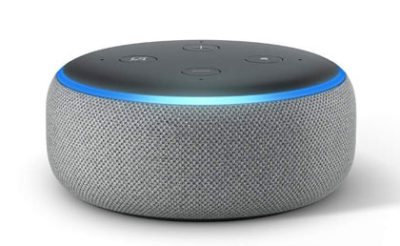Outside Scoop: Mixing Bass for Small Speakers, Faking a Rock Band in Your DAW, and More
Catch up on this week’s most exciting music production articles and videos from around the web with the Outside Scoop. I sort through over 100+ articles and videos each week, hunting down content from the best educators online. Highlights from this week include mixing bass for small speakers, faking a rock band in your DAW, and an exploration of how plugin design may be affecting what you hear.
Mixing Bass for Small Speakers
When you mix bass on large, high-quality studio speakers, you don’t have a great sense of how it will sound on small speakers. Dave Pensado uses MaxxBass from Waves to make the bass in his songs more audible on small speakers. He likes to follow up this processing with a high-pass filter and another plugin from Waves called LoAir.
10 Points to Consider Before Recording Electric Guitar
Bobby Owsinski, author of the Recording Engineer’s Handbook, offers up 10 things to consider before recording electric guitar. The first point on this list recommends raising an amplifier or speaker cabinet off the ground; this makes sure that “reflections from the floor don’t couple or cancel the direct sound from the speakers.” Whether you’re new to recording, or an experienced pro, there’s very likely a trick or two that you’ll be able to pick up from Owsinski.
5 Favorite EQ Plugins for Mixing
Matthew Weiss of the Pro Audio Files runs through his go-to EQs and explains why he likes them and how he uses them. The plugins that made the list include FabFilter’s Pro-Q 3, Slate Digital’s FG-S and FG-A (found in the VMR), Sonible’s smart:EQ 2 (proximity:EQ+ and entropy:EQ+), Wavesfactory’s Spectre, and Sound Radix’s SurferEQ 2. The best part of this article is that Weiss explains how he mixes 808s, vocals, drums, pianos, acoustic guitar, and more using the EQs he mentions.
How to Record Audio from Any App on Your Mac
This article from Black Ghost Audio dives into how you can record audio from web browsers, Skype calls, and video games using Rogue Amoeba’s Audio Hijack. Learn how to process app audio in real time, making it possible to do things like compress the audio in Netflix shows. Free alternatives like Soundflower and OBS exist, although they aren’t quite as user-friendly as Audio Hijack.
Ask an Audio Engineer: The Mix Tip Mailbag
LANDR’s readers mailed in mixing questions to Al Isler, LANDR’s senior audio engineer. They asked questions like, “How do I make vocals sound vintage?”, “What’s the functional difference between linear and non-linear phase EQ?”, and “How do you effectively control the 808?” Isler does a great job of explaining his answers, making this article quite a valuable read.
6 Ways to Get a Rock Sound (Without a Band)
Recording a band takes a lot of time, gear, and effort. MusicTech gathered together six different plugins you can use to recreate acoustic guitar, electric guitar, bass guitar, distortion pedals, drums, and even vocals. These plugins include Native Instrument’s Session Guitarist Strummed Acoustic, Applied Acoustics Strum GS-2, Impact Soundworks’ Shreddage 1, Waves GTR-3, Toontrack’s Superior Drummer 3, and Yamaha’s Vocaloid.
How to Make a Reese Bass More Unique
Echo Sound Works released a refreshing tutorial through ADSR that covers creating unique Reese basses using Serum. While this classic bass sound is a staple in EDM, it can sound stale if you don’t know how to pull it off organically. A simple Reese bass can be made by running a saw wave with its voice count and detune amount turned up; this signal is then routed through a low-pass filter. Echo Sound Works pushes a basic Reese bass to the limits using multiple waveforms, modulation, layered noise, and volume automation.
When to Use Parallel Compression
Parallel compression allows you to achieve the squashed sound that comes along with heavy compression while maintaining the transients of the material you’re working with. Sadowick takes a look at parallel compression, or New York compression, and explains when it’s appropriate to use this mixing technique.
Skeuomorphism: How Plugin Design Affects What You Hear
LANDR is on a role with articles this week, and Michael Hahn has made sure to keep the train rolling. He states that “Skeuomorphism is a design principle in which elements of a user interface in the digital domain mimic the appearance of their equivalent in the physical world.” Hahn discusses cognitive biases and explores how plugin GUIs may be affecting your mixes.
Charles Hoffman is a Mixing and Mastering Engineer at Black Ghost Audio. After graduating from the University of Manitoba with an English degree, Charles completed his education at Icon Collective in Los Angeles, CA.
Please note: When you buy products through links on this page, we may earn an affiliate commission.








[…] http://sonicscoop.com/2019/02/23/outside-scoop-mixing-bass-for-small-speakers-faking-a-rock-band-in… Outside Scoop: Mixing Bass for Small Speakers, Faking a Rock Band in Your DAW, and More […]